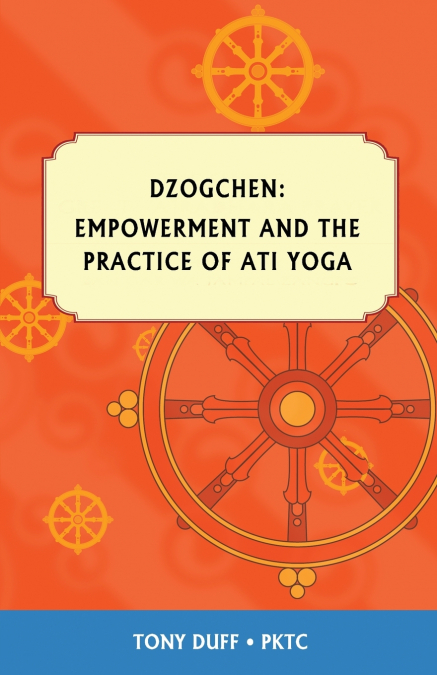
 Librería Perelló (Valencia)
Librería Perelló (Valencia)
 Librería Aciertas (Toledo)
Librería Aciertas (Toledo)
 Librería Elías (Asturias)
Librería Elías (Asturias)
 Donde los libros
Donde los libros
 El AlmaZen del Alquimista (Sevilla)
El AlmaZen del Alquimista (Sevilla)
 Librería Kolima (Madrid)
Librería Kolima (Madrid)
 Librería Proteo (Málaga)
Librería Proteo (Málaga)
This book was composed to assist Western students who are taking empowerments in general, and especially those who are practicing the teachings of Dzogchen. The Nyingma tradition of Tibetan Buddhism sets out its teachings in a set of nine approaches or vehicles to reality. The nine vehicles are arranged in a graded sequence, with each vehicle being higher than its preceding vehicle and lower than the one above it. The highest of the vehicles is called Dzogchen and also Maha Ati, where 'ati' means 'the one at the farthest end of a sequence' or 'the one at the farthest limit'. Thus, Ati Yoga is the peak of all practices or yogas in the nine vehicle system.To engage in the practices of Ati Yoga, it is necessary to be introduced to the world of the Ati practitioner. One of the principal procedures for doing that is called 'empowerment'. The instructions surrounding empowerment can be difficult to understand, so this book begins with a straightforward explanation of what empowerment is. Following that, the translations from Tibetan of three actual empowerment rituals of the Maha Ati level are presented.The book ends with an explanation of the approach that an Ati practitioner takes after having been empowered into the Ati world. The explanation comes from the great Dzogchen master Dilgo Khyentse Rinpoche of Shechen Monastery in the form of a letter to one of his lady disciples. It is a rare teaching that will be of help to any Dzogchen practitioner. Substantial notes and an extensive glossary are included to make the material more accessible.